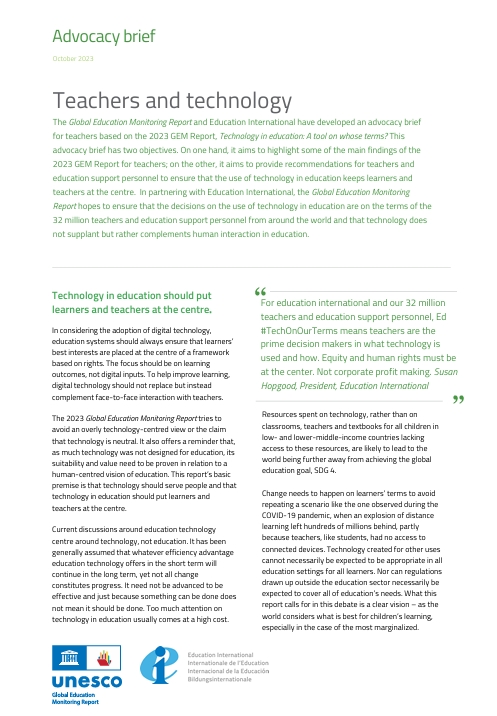(Photo by AAron Ontiveroz/The Denver Post via Getty Images)
From: Forbes, Frederick Hess, Contributor
Last week, RAND issued its massive and mostly negative evaluation of the Gates Foundation’s ambitious effort to redesign teacher evaluation, compensation, and employment practices in three school districts and four charter school management organizations. The foundation’s Effective Teacher Initiative, launched with great fanfare a decade ago, was an ambitious, expensive reform.
The final verdict was harsh, with RAND concluding, “The initiative did not achieve its goals for student achievement or graduation, particularly for LIM [low income minority] students.” As the University of Arkansas’s Jay Greene noted, even that is probably too generous an assessment. Greene observed, “This summary really under-states what they found. You have to slog through the 587 pages of the report and 196 pages of the appendices to find that the results didn’t just fail to achieve goals, but generally were null to negative across a variety of outcomes.”
And these disappointing results were not cheap. RAND reports that the Effective Teacher Initiative cost the participating schools $575 million between 2009 and 2016, with Gates contributing $212 million of that total. This tally doesn’t include the staff time to conduct the requisite evaluations. Staff time totaled $73 million in 2014-15 alone (the only year RAND calculated it). That would suggest that the enormous time and effort required by the evaluation process translated into additional hundreds of millions in costs.
While it may be tempting to regard the RAND evaluation as closing the book on another oversold education reform, doing so would be a mistake. There’s much that can and should be learned from the exercise, especially given that the core idea makes good, intuitive sense—however problematically it was executed. As Brown University’s Matt Kraft, a scholar of teacher evaluation policy, noted, “This is an incredibly rich study that I hope is not pigeonholed into being just the ‘nail in the coffin’ of teacher eval[uation].” He added, “The headlines will all focus on the impact estimates, but . . . the story here is really about implementation.”
So what are some of the key lessons to keep in mind? There are at least five—and they are especially relevant for those who believe we can do a much better job of recognizing terrific teachers, identifying and supporting teachers who need help, and moving consistently lousy teachers out of the profession.
- The reforms demanded too much time. The evaluations required an enormous amount of time and paperwork, and were frequently seen as a burden and distraction by teachers and school leaders alike. While principals value the chance to get better, more meaningful insight into teaching, this got swamped by the paper burdens and process demands.
- Big investments in new evaluation systems didn’t yield meaningful change. Principals tended to rate teachers highly, and scores inflated over time. It turns out that principals generally don’t like to give negative evaluations to their teachers, especially when they don’t really trust that poor performers will be removed. If principals expect that teachers will stick around regardless, they’d rather be on good terms and avoid alienating their staff.
- The new systems didn’t help attract talent. Part of the argument for school systems moving to revamp staffing, evaluation, and pay is that it will help attract talented professionals who want to work in an environment where their efforts are recognized and valued. In fact, the changes didn’t help on that score, and may have actually made it harder to attract quality educators.
- Little bonuses don’t induce educators to make big changes. Teachers reported that relatively modest one-time bonuses weren’t enough to prompt them to alter how they went about their job. And concerns about how they’d be evaluated under the new systems left teachers leery of modest cash incentives intended to get them to move to low-performing schools. While traditional districts faced contractual constraints, perhaps the bigger story was the reluctance of the charter school systems to seize the opportunity to rethink teacher roles and teacher pay
- None of this means that teacher evaluation “doesn’t work.” Rather, the point is that it’s much more complicated and much harder to do well than advocates, the Gates Foundation, or these districts initially anticipated. The challenge turns out to be less the willingness to tackle evaluation than the ability to design workable systems and then execute all the myriad details, cultural shifts, contractual modifications, and interpersonal dynamics.
In the American system, philanthropy has a vital role when it comes to pioneering untried strategies and seeking new solutions. So long as foundations are transparent about what transpires and we take the time to examine what happened and why, even grand disappointments can be beneficial and instructive. In this case, the Gates Foundation has done its part, funding a remarkably honest and informative postmortem. The task now is to be sure that we learn the lessons it has to teach.






